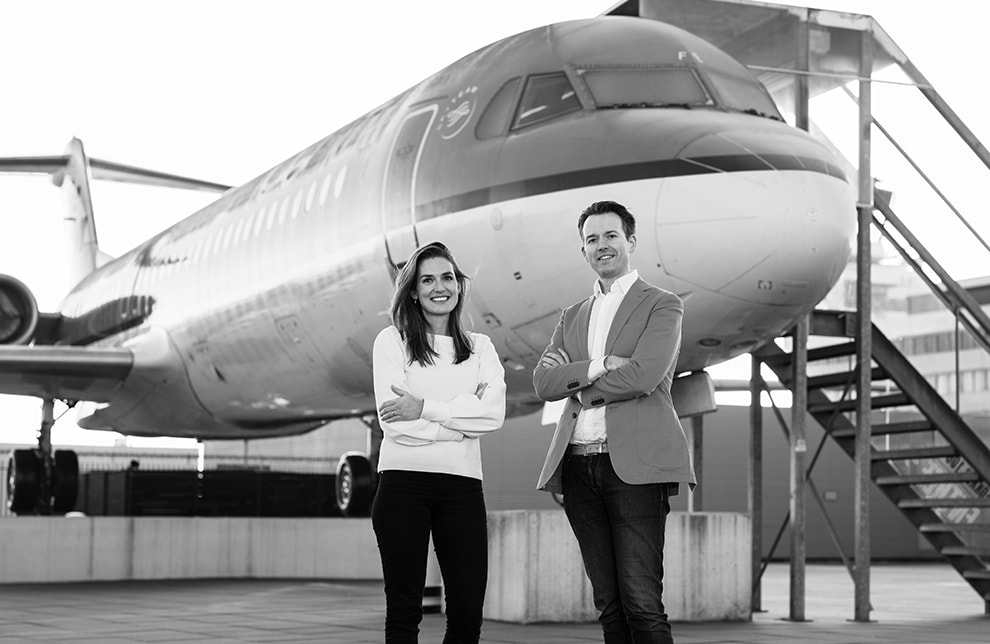Deep Turnaround: How do you optimise an airport process?
It seems quite straightforward: an aircraft has just arrived and needs to be prepared for its next departure. It has to “turn around”. But the processes needed to achieve this are more complex than you would think. Many parties are involved and therefore it is hard to maintain a total overview, which means it is also challenging to find out which elements of this process cause delays, and fix them quickly. Amsterdam Airport Schiphol has identified this problem and created an innovative solution.

A plane has just landed and arrived at the gate. While passengers casually loosen their seat belts, outside the aircraft a legion of different teams are getting ready to do their part. Baggage handlers, cleaners, caterers, technicians and planners all share the same goal: to get the aircraft ready for its next departure, in time. When you combine all elements in this process, you get what the industry calls: “The turnaround”.
The turnaround is a complex puzzle
Without a clear overview, it remains a challenge to get an aircraft on the runway at the scheduled time. Because when you don't know that something isn't going quite according to plan, you can’t do anything about it. To solve this specific problem, Schiphol has developed a solution that uses artificial intelligence (AI).
Aviation Solutions, Schiphol's department that focuses on aviation innovations, is working with PA Consulting to further increase the impact of the solution. Other airports are also struggling with the lack of information in the turnaround process and are very interested in Schiphol's AI solution. This offers great opportunities to quickly scale up the innovation and apply it elsewhere.
Transparency and predictability in turnarounds
“About half of all delays occur during the turnaround process,” says Caroline Massart, Head of Schiphol Group Aviation Solutions. “This is not only because so many different parties are involved, but also because they all work with different digital systems. As a result, not everything is always well coordinated. The AI system adds both predictability and transparency to the process. The activity around an aircraft is monitored by cameras and the algorithm predicts when delays are likely to occur. This allows parties to take action sooner. And the great thing is that it’s a self-learning system that makes increasingly better predictions over time.”
Promising results of Deep Turnaround
“At Schiphol, Deep Turnaround has already proven to be very useful,” emphasises Pieter Kamstra, who, as managing consultant of PA Consulting, helps Schiphol to make the system solid, reliable and scalable. “For example, the predictive power of the system ensures that a last-minute gate change is required less often. At the moment, more than half of the gates are connected to Deep Turnaround. Once the entire airport is connected, the number of last-minute gate changes is expected to decrease by 25 to 50 percent and result in fewer delays.”
Knowledge partner
The next challenge: translating what happens at Schiphol to other airports. PA Consulting acts as a technical implementation partner and as a business knowledge partner. Kamstra: “It really helps that Schiphol is known worldwide as a pioneer and innovative airport. Other airports were therefore interested in Schiphol's AI system from the start. In fact, we are actually working on implementing Deep Turnaround at another airport! This just shows how important it is to get started quickly with innovative ideas that can make a difference. Because usually you only notice in practice what exactly is needed to make it work really well. In addition, you immediately have something concrete, which allows you to show others the benefits of such an innovation.”
Future ambition for turnaround
“It is really remarkable that we have managed to scale our innovation to another airport in such a short time,” says Massart. “The more airports that join, the more experience we gain to improve and further develop Deep Turnaround. And this in turn helps to realise Schiphol's ambition for the future: to be an airport where, by the year 2050, ground handling vehicles and associated processes are carried out fully autonomously.”
Note: This article, written by Menno de Boer, first appeared in NRC. It has been translated and published here with permission.
Photo credit: Janita Sassen
Subscribe to Aviation Solutions updates:
Discover what we're up to and receive a quarterly digest of everything related to Aviation Solutions.
Read the previous blogs
-
The Amsterdam Delay Allocation Method explained
Published on:Here’s how airports can improve delay insights by using already available data to get a deep understanding of the delay breakdown, enabling improvements.

-
Menzies’ 365 days with Deep Turnaround
Published on:Menzies Aviation shares their insights on how they transformed airport efficiency and communication with Schiphol's Deep Turnaround system over the past year.

-
Deep Turnaround featured on Future Airport
Published on:Future Airport's feature highlights Schiphol and Eindhoven Airport for their adoption of Deep Turnaround tech, revolutionizing airport operations.
